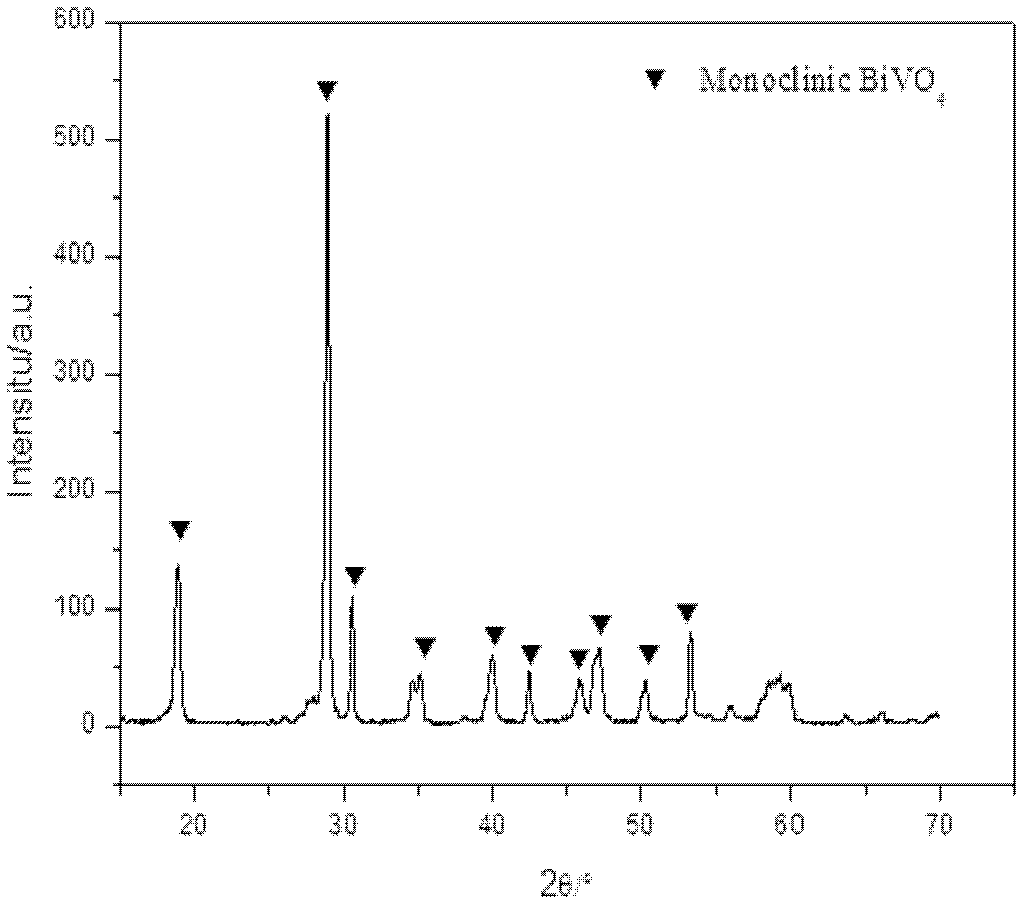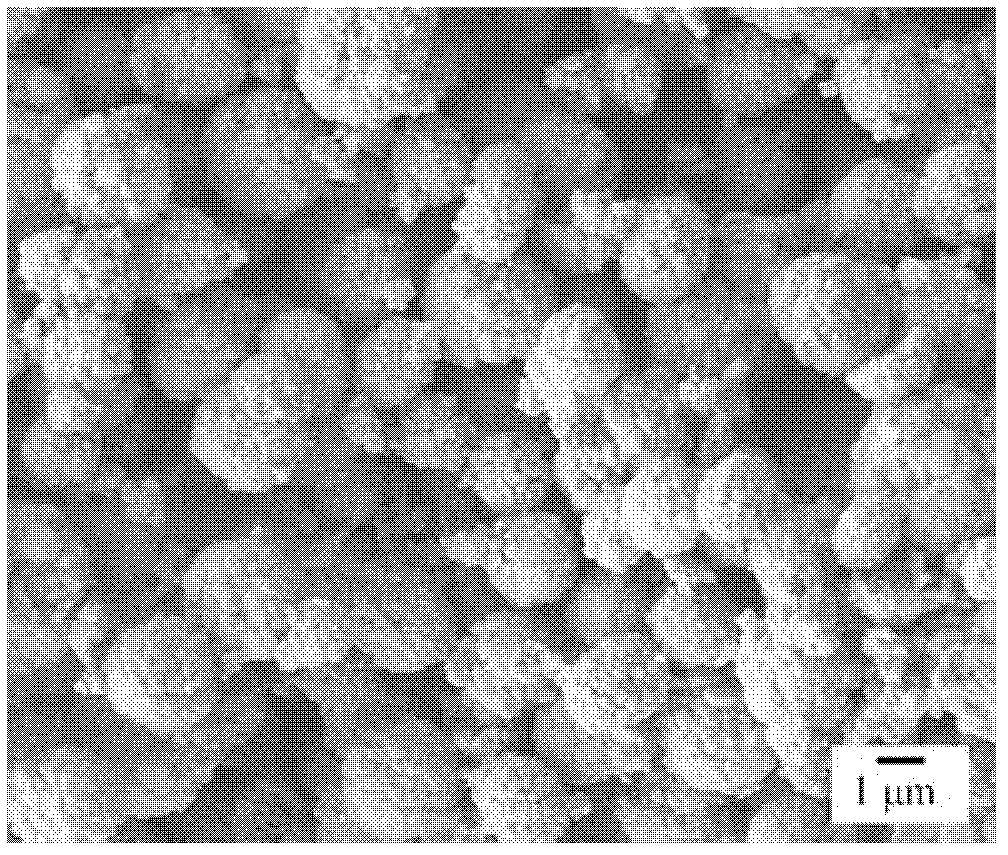A method for synthesizing monoclinic bismuth vanadate photocatalyst powder by microwave hydrothermal method
A monoclinic bismuth vanadate, microwave hydrothermal method, applied in chemical instruments and methods, catalyst activation/preparation, physical/chemical process catalysts, etc. Uniformity, large temperature gradient, etc., to achieve the effects of short preparation cycle, energy saving, and uniform particle size distribution
- Summary
- Abstract
- Description
- Claims
- Application Information
AI Technical Summary
Problems solved by technology
Method used
Image
Examples
Embodiment 1
[0028] Step 1: Add 0.005mol Bi(NO 3 ) 3 ·5H 2 O dissolved in 20mL with a concentration of 2mol / L HNO 3 solution, 0.005mol NH 4 VO 3 Dissolve in 20mL NaOH solution with a concentration of 1mol / L;
[0029] Step 2: Mix the two solutions in step 1 evenly, stir on a magnetic stirrer for 10 minutes, and prepare a precursor solution;
[0030] Step 3: Add the precursor solution into the microwave hydrothermal reactor with a filling ratio of 40%, then place the reactor in a microwave-assisted hydrothermal synthesizer, set the reaction temperature to 200°C, and the holding time to 60 minutes;
[0031] Step 4: After the reaction is completed, cool down, take out the yellow precipitate in the reaction kettle, wash with deionized water until neutral, then wash with absolute ethanol, and finally dry at a constant temperature at 80°C to obtain monoclinic phase BiVO 4 Powder.
[0032] Measure the phase composition and structure of the powder prepared in Example 1 with XRD, measure the ...
Embodiment 2
[0034] Step 1: Add 0.005mol Bi(NO 3 ) 3 ·5H2 O dissolved in 20mL with a concentration of 4mol / L HNO 3 solution, 0.005mol NH 4 VO 3 Dissolve in 20mL NaOH solution with a concentration of 2mol / L;
[0035] Step 2: Mix the two solutions evenly, stir on a magnetic stirrer for 20 minutes, and prepare a precursor solution;
[0036] Step 3: Add the precursor solution into the microwave hydrothermal reactor with a filling ratio of 60%, then place the reactor in a microwave-assisted hydrothermal synthesizer, set the reaction temperature to 180°C, and the holding time to 90 minutes;
[0037] Step 4: After the reaction is completed, cool down, take out the yellow precipitate in the reaction kettle, wash with deionized water until neutral, then wash with absolute ethanol, and finally dry at a constant temperature at 80°C to obtain monoclinic phase BiVO 4 Powder.
Embodiment 3
[0039] Step 1: Add 0.002mol Bi(NO 3 ) 3 ·5H 2 O dissolved in 20mL with a concentration of 6mol / L HNO 3 solution, 0.002mol NH 4 VO 3 Dissolve in 20mL NaOH solution with a concentration of 4mol / L;
[0040] Step 2: Mix the two solutions in step 1 evenly, stir on a magnetic stirrer for 30 minutes, and prepare a precursor solution;
[0041] Step 3: Add the precursor solution into the microwave hydrothermal reactor with a filling ratio of 50%, then place the reactor in a microwave-assisted hydrothermal synthesizer, set the reaction temperature to 220°C, and the holding time to 120min;
[0042] Step 4: After the reaction is completed, cool down, take out the yellow precipitate in the reaction kettle, wash with deionized water until neutral, then wash with absolute ethanol, and finally dry at a constant temperature at 80°C to obtain monoclinic phase BiVO 4 Powder.
PUM
 Login to View More
Login to View More Abstract
Description
Claims
Application Information
 Login to View More
Login to View More - R&D
- Intellectual Property
- Life Sciences
- Materials
- Tech Scout
- Unparalleled Data Quality
- Higher Quality Content
- 60% Fewer Hallucinations
Browse by: Latest US Patents, China's latest patents, Technical Efficacy Thesaurus, Application Domain, Technology Topic, Popular Technical Reports.
© 2025 PatSnap. All rights reserved.Legal|Privacy policy|Modern Slavery Act Transparency Statement|Sitemap|About US| Contact US: help@patsnap.com


